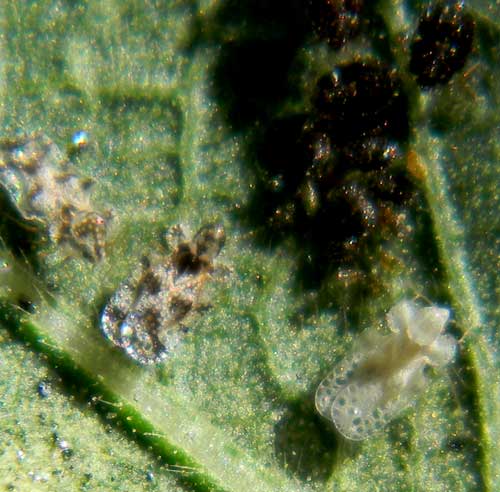Lace Bug
Corythucha sp.

This group of lace bugs likely belongs to the species Corythucha morrilli, a species associated with various plants in the sunflower family. Three adults are visible with their lacy shields. The nearly white bug at lower right has recently eclosed to an adult and will darken with time. At upper right are a number of immatures, nymphs, which are wingless and almost black. Actual length about 3mm (1/8 inch). Observed on Camphor Weed (Heterotheca subaxillaris) near Continental, Pima Co., Arizona, USA. Sept. 2010.
Tingidae -- Lace Bug Family
Lace bugs occur usually in close groups of adults and nymphs feeding on the undersides of leaves. With the piercing-sucking mouthparts characteristic of true bugs they penetrate leaf veins and cells and pump out plant sap. When abundant the feeding may cause leaf necrosis or leaf-drop. Adult lace bugs are capable of flight and will move to new host plants. There are many kinds of lace bugs that look quite similar without a microscope; each species tends to favor one or a few closely related plants.
The desert lace bug shown here is frequently found on sunflowers and brittle bush in urban xeriscape gardens. I have also found these insects in large numbers on the troublesome plant, asthma-weed (Conyza bonariensis). When the lacebug populations are on the upswing this weed becomes less abundant and when lacebug populations crash the weed returns to invade gardens and gravel yards. The mechanisms behind these wild population changes are not completely known.